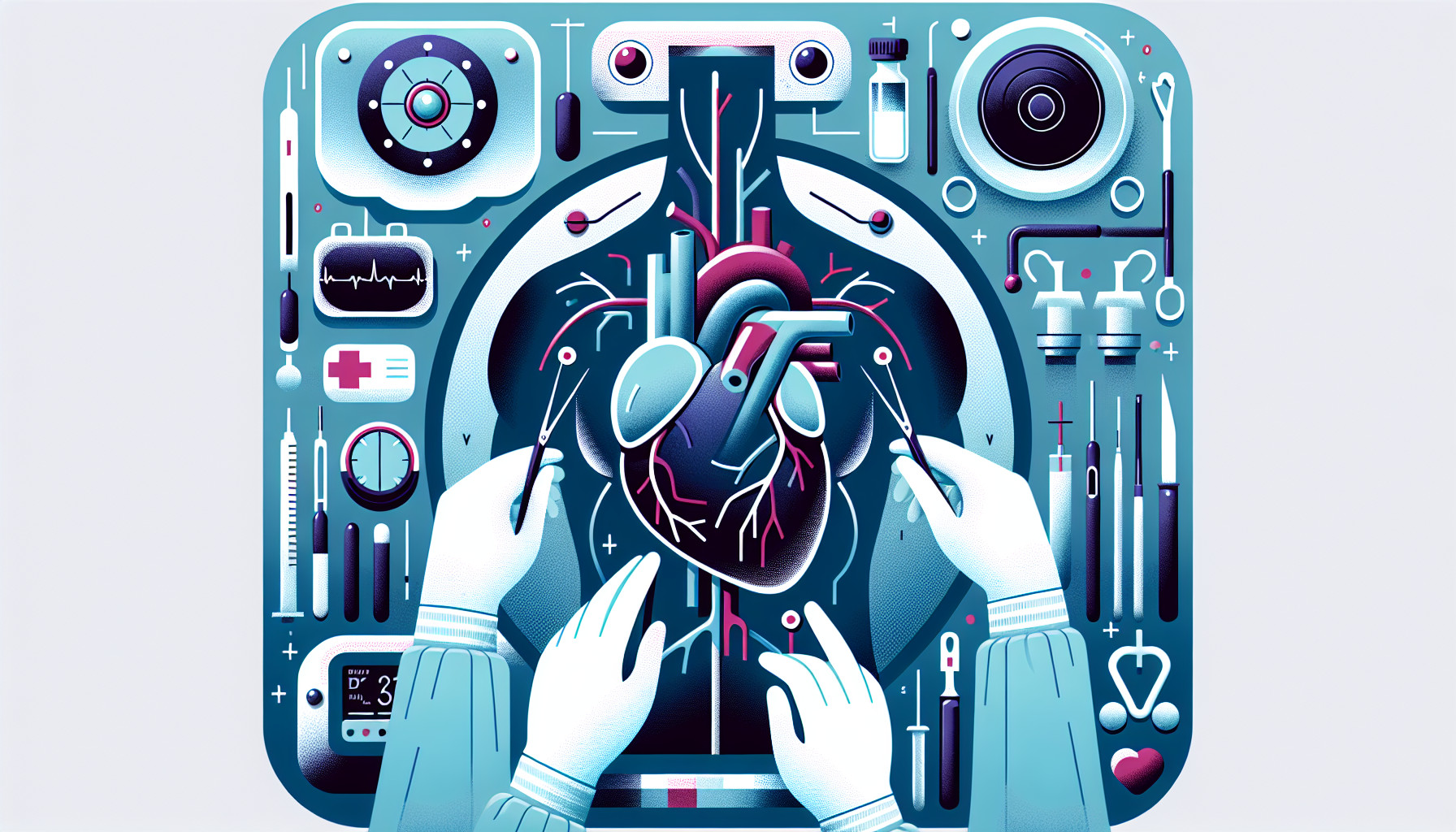Our Summary
The research paper discusses a rare case of a 66-year-old woman who developed a coronary artery pseudoaneurysm - a false aneurysm that is a rare condition, usually occurring after trauma or certain procedures. This happened three weeks after she had a coronary artery bypass grafting, a type of heart surgery. To avoid having to open the breastbone again (re-sternotomy), the pseudoaneurysm was effectively treated with a covered coronary stent (a small tube placed in the artery to keep it open), along with a less invasive surgical procedure to remove blood that had collected around the heart and relieve pressure on it.
FAQs
- What is a coronary artery pseudoaneurysm and how common is it?
- What risks are associated with a delay in diagnosis or treatment of a coronary artery pseudoaneurysm?
- How was the coronary artery pseudoaneurysm managed in the case presented in the article?
Doctor’s Tip
One helpful tip a doctor might tell a patient about coronary artery bypass is to follow a healthy lifestyle after the procedure. This includes maintaining a balanced diet, staying physically active, quitting smoking, managing stress, and taking prescribed medications as directed. These lifestyle changes can help prevent further complications and improve overall heart health.
Suitable For
Patients who are typically recommended for coronary artery bypass surgery are those with severe coronary artery disease that cannot be adequately treated with medications or less invasive procedures such as angioplasty. These patients may have significant blockages in multiple coronary arteries, leading to symptoms such as angina or shortness of breath, or they may have already experienced a heart attack. In some cases, patients with coronary artery pseudoaneurysms, as described in the case above, may also require coronary artery bypass surgery to repair the abnormality and restore blood flow to the heart muscle.
Timeline
Before coronary artery bypass surgery:
- Patient may present with symptoms of chest pain, shortness of breath, fatigue, or other signs of coronary artery disease
- Patient undergoes diagnostic tests such as coronary angiography to determine the extent of blockages in the arteries
- Surgery is recommended if the blockages are severe and affecting blood flow to the heart muscle
After coronary artery bypass surgery:
- Patient undergoes a recovery period in the hospital, where they are monitored closely for any complications
- Patient may experience pain, fatigue, and difficulty with daily activities as they recover
- Follow-up appointments with the surgeon and cardiologist are scheduled to monitor the patient’s progress and make any necessary adjustments to medications or lifestyle changes
- In some cases, complications such as coronary artery pseudoaneurysm may arise and require further intervention to prevent serious consequences
In the specific case presented:
- The patient developed a coronary artery pseudoaneurysm three weeks after the bypass surgery
- The pseudoaneurysm was successfully managed with a covered coronary stent and mini-left anterior thoracotomy to evacuate the hemopericardium and relieve tamponade
- The patient likely underwent additional monitoring and treatment to ensure the successful resolution of the pseudoaneurysm and prevent any further complications.
What to Ask Your Doctor
What caused the coronary artery pseudoaneurysm to develop after the bypass surgery?
What symptoms should I watch out for that may indicate a problem with the pseudoaneurysm?
What are the risks associated with leaving the pseudoaneurysm untreated?
What treatment options are available for managing the coronary artery pseudoaneurysm?
What is the success rate of using a covered coronary stent to treat the pseudoaneurysm?
How long will it take for me to recover from the procedure to manage the pseudoaneurysm?
Will I need to make any lifestyle changes or take medication to prevent future complications with the pseudoaneurysm?
How often should I follow up with you to monitor the pseudoaneurysm and my overall heart health?
Are there any potential complications or side effects associated with the treatment for the pseudoaneurysm?
Is there anything else I should know about my condition and the treatment plan for the coronary artery pseudoaneurysm?
Reference
Authors: Ghannam A, Amoroso N, Mathbout M, Kilic A, Witer L, Zeigler S, Steinberg D, Katz M, Pope N. Journal: Heart Surg Forum. 2022 Apr 22;25(2):E297-E299. doi: 10.1532/hsf.4531. PMID: 35486052
